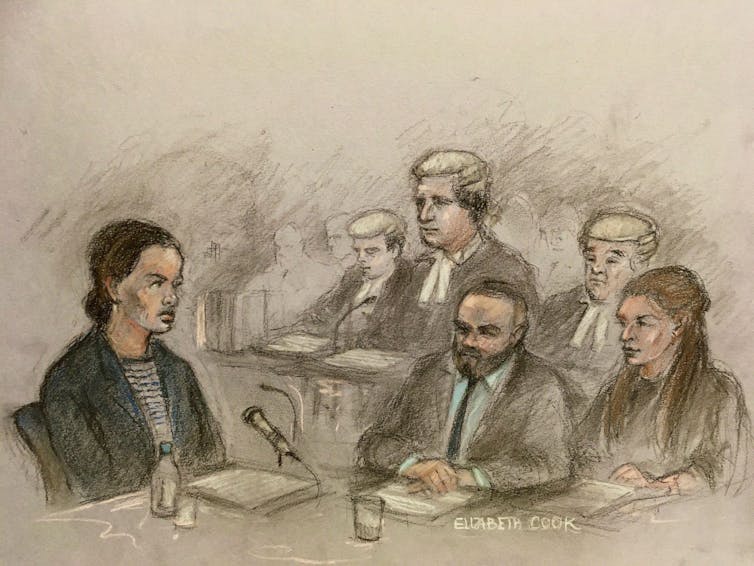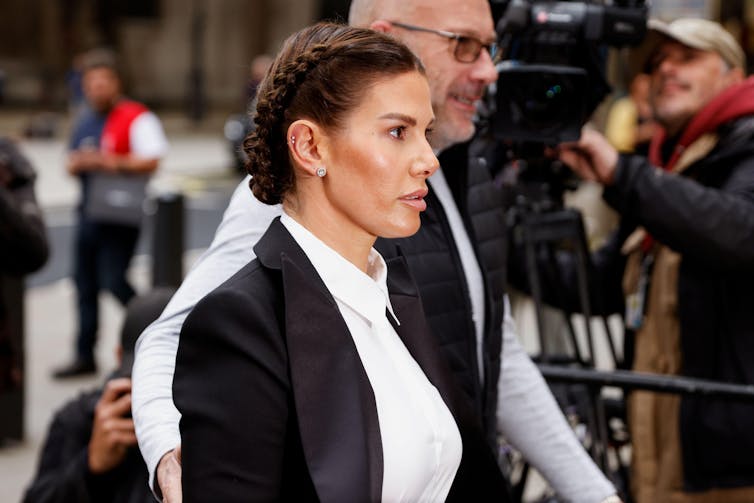The Wagatha Christie libel case is now over, with Rebekah Vardy losing her lawsuit against fellow football WAG (short for wives and girlfriends) Coleen Rooney Future in a high court judgement that questioned Vardy’s credibility as a witness.
Although the case is now over, the result has several lessons for future litigants about the inherent risks and costs of libel litigation in today’s social media environment.
The case centred on Rooney’s viral social media post, accusing Vardy of leaking stories about her to the press.
Rooney came to this conclusion after conducting social media detective work to single out Vardy as the culprit – hence the nickname “Wagatha Christie”.
Vardy then sued Rooney for libel.
In a preliminary hearing, a judge ruled that Rooney’s post essentially meant that Vardy “regularly and frequently abused her status as a trusted follower” of Rooney’s personal account by secretly informing the Sun of private stories. The issue at the heart of the final trial was whether this meaning was “substantially true”. This effectively meant that Rooney needed to convince the judge that there was a more than 50% chance that her allegation was true in substance and fact. This is a less onerous standard compared to criminal cases, which require proof beyond reasonable doubt.
The libel dispute itself did not raise any complex legal issues. The outcome largely depended on the evidence and findings of fact in the particular case. Rooney successfully established her defence of truth, meaning that the court was persuaded that her sleuthing proved solid.
The evidence (or what was left of it)
Vardy claimed that Rooney had no basis for making these allegations since she did not know whether it was Caroline Watt (her former publicist) or Vardy doing the leaking. At trial, the court heard that, in an unfortunate turn of events, Watt’s phone had fallen into the North Sea, shortly after a legal request was made to inspect its WhatsApp exchanges.
Rooney’s defence relied partly on a 1722 legal precedent (which has been endorsed in more recent cases) to argue that the judge is entitled to draw negative conclusions where evidential gaps were created.
Mrs Justice Steyn was highly critical of the loss of key communication evidence in the case. She held that the likelihood that the loss of the phone was accidental was “slim” and found that Vardy and Watt “deliberately deleted or destroyed evidence”. This is an assessment that no judge makes lightly.The judge found it likely that Vardy’s former publicist was the one who directly passed information to the Sun, but that Vardy “knew of and condoned this behaviour, actively engaging in it by directing her publicist to the private Instagram account”. However, she acknowledged that Vardy’s regular leaking to the Sun was “unthinking rather than part of a considered and concerted business practice”.
The judge was unequivocal in her decision that Vardy’s evidence should be treated “with very considerable caution”. By contrast, she found Rooney an “honest” witness who answered questions “without any evasion”.
The public interest argument
Rooney also made a bold attempt to argue that her statement revealing Vardy as the source of the leaks was in the public interest. This argument was ultimately defeated.
The court accepted that Rooney’s post highlighted the undesirable practice of betraying trust and crossing the line between private and public accounts when personal stories ended up in the press. This had public interest value. However, this secondary defence failed largely because Rooney had not given Vardy an opportunity to respond to the allegation before posting.
This is an interesting finding because the court seems to suggest that Rooney was expected to follow standard journalistic practice and give Vardy an advance warning, as a responsible journalist would normally do. It may not, however, appear entirely realistic to put most members of the public who post material on social media on the same par with news publishers or journalists writing for mainstream news websites.

Paying the price
Unfortunately for Vardy, the battle is not exactly over yet. She will have to pay Rooney’s legal costs as well as her own. Her loss means she will not receive any damages either.
It is estimated that the total bill for both sides will be roughly in the region of £2 million. Considering the money at stake, some negotiations are expected before the court decides what is reasonable and proportionate for Vardy to pay.
Even Rooney is likely to suffer losses.
The winning party in libel cases normally recovers only about 70% of their costs.
Apart from the financial loss, we cannot ignore the impact on Vardy’s reputation. Days of cross examination put aspects of her private life under the microscope and painted a far from favourable picture of her. More damaging perhaps was the judgment, running into 75 pages, in which the judge made scathing observations about Vardy’s conduct, saying she “deliberately deleted or destroyed evidence” and engaged in “publicity-seeking behaviour”.
Importantly, the judge recognised that Vardy had faced appalling online treatment and “vile abuse” from social media trolls, following Rooney’s claims. She emphasised that nothing of which Vardy had been accused could justify subjecting her and her family to “such vitriol”.

The disproportionate impact of online abuse on women is well-documented . Vardy’s experience in the context of this trial is another indication why the online safety bill
– which aims (among others) to tackle such deeply harmful conduct but has been put on hold
– should not be abandoned.
Vardy’s case serves as a warning to future litigants, who may feel pressure to clear their reputations especially in fear of “cancel culture”. You can sue for defamatory allegations published on social media. But a libel trial is a risky path to vindication. Litigants in high-profile cases may expect months of overheated media coverage . And any damages awarded will usually be dwarfed by the legal costs.

